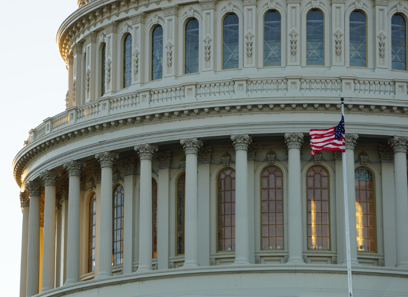The Influence of Mergers and Acquisitions on Market Dynamics and Competition
The landscape of acquisitions and mergings offers a complex interplay between fostering development and potentially threatening affordable stability within markets. As companies go after calculated placements to enhance efficiency and technology, the ramifications on customer selection and market prices warrant careful scrutiny. While the benefits of such consolidations can be apparent, the darker effects commonly arise, increasing important concerns concerning market power and the regulative frameworks developed to maintain balance. This conversation invites an exploration of the nuances involved, revealing how these business maneuvers reshape the really structures of competitors.
Overview of Mergers and Acquisitions
Mergers and acquisitions (M&A) play a crucial duty in forming the landscape of modern-day company, as companies seek to boost their one-upmanship and achieve tactical objectives. M&A deals include the debt consolidation of companies or assets via different monetary deals, including mergings, where 2 companies incorporate to create a new entity, and acquisitions, where one company purchases an additional outright. These activities are driven by a myriad of aspects, such as the search of synergies, diversity of product offerings, and the desire to go into brand-new markets.
The M&A procedure usually entails a number of stages, consisting of strategic preparation, due diligence, arrangement, and combination (Emerging Market Opportunities). Business perform comprehensive analyses to identify prospective targets that line up with their growth approaches and evaluate the functional and financial effects of a purchase. Regulatory factors to consider likewise play a vital duty, as antitrust legislations are designed to avoid monopolistic practices that could hurt competitors
As organizations navigate the complexities of M&A, the results can significantly impact stakeholders, consisting of consumers, shareholders, and employees. Understanding the dynamics of M&A is necessary for assessing their implications within the more comprehensive context of market behavior and affordable placing.
Favorable Impacts on Market Characteristics
The combination of business with purchases and mergings can lead to considerable favorable results on market characteristics. This efficiency can convert right into reduced rates for consumers, promoting an extra competitive market setting.

In addition, increased market share arising from mergings can give companies with greater bargaining power with distributors and vendors, assisting in boosted terms and conditions that can profit the total supply chain.
Adverse Effects for Competition

Additionally, the removal of rivals through acquisitions can suppress technology. When principals merge, smaller companies might battle to contend, causing a homogenization of product or services. The resultant lack of competition can develop an environment where continuing to be firms have less reward to buy research and development.
Additionally, mergers can develop obstacles to entrance for new firms, as the merged entity might take advantage of its improved sources to control the market. This can discourage prospective entrants, thus limiting competition and technology in the long-term.
Eventually, while mergings and procurements can provide tactical benefits, their prospective to undermine competition requires careful consideration check my blog of their more comprehensive ramifications on the market dynamics. The equilibrium between growth and competitive integrity remains an important concern in assessing such company approaches.
Governing Considerations and Oversight
Regulatory frameworks play a vital function in shaping the landscape of acquisitions and mergings, guaranteeing that market characteristics remain reasonable and affordable. These structures are made to stop anti-competitive behavior and to safeguard consumer passions. Governing bodies, such as the Federal Profession Commission (FTC) in the United States and the European Commission in the EU, evaluate suggested procurements and mergers based on their prospective effect on competitors within the market.
The evaluation process entails an extensive investigation of the market share, potential for monopolistic techniques, and the overall financial implications of the transaction. Regulators commonly impose conditions or need divestitures to reduce concerns over decreased competitors, making certain that the joined entity does not dominate the market unjustly.
Additionally, transparency is a vital element of governing oversight. Stakeholder involvement, consisting of public consultations, permits for varied viewpoints to be considered in the decision-making procedure. This joint technique aids to promote a balanced regulatory atmosphere that promotes innovation while securing affordable techniques. Ultimately, effective regulatory considerations are essential in preserving market stability and encouraging healthy and balanced competition in the face of evolving company landscapes.
Study and Real-World Instances
Frequently, case researches of remarkable mergings and acquisitions illustrate the extensive results these deals can have on market dynamics. The 2000 merger between AOL and Time Warner works as an archetype, where the anticipated synergies dropped short, causing an extreme decrease in investor worth. This situation highlights how social misalignments and overestimation of market possibility can disrupt competitors.
On the other hand, the acquisition of WhatsApp by Facebook in 2014 exemplifies a successful combination that reshaped the interaction landscape. Emerging Market Opportunities. Facebook leveraged WhatsApp's user base to improve its solution offerings, effectively increasing its market dominance while keeping competitors in the messaging industry
Another substantial instance is the merging of Exxon and Mobil in 1999, which produced among the world's largest oil business. This consolidation resulted in better efficiencies but elevated issues regarding lowered competitors in the energy market, motivating governing scrutiny.
These instances highlight the intricate interplay in between mergings and purchases and market characteristics, showcasing both the prospective advantages and challenges that can arise, eventually forming affordable landscapes throughout markets.
Verdict
Mergers and acquisitions play a critical role in forming market characteristics and competitors. Effective regulatory oversight is essential to make sure that the benefits of M&An activities are optimized while minimizing adverse effects on market competition.
One major worry is the possibility for minimized market competition, as mergings frequently lead to the consolidation of market power amongst fewer gamers. Regulative bodies, such as the Federal Trade Commission (FTC) in the United States view it now and the European Compensation in the EU, assess recommended acquisitions and mergers based on their possible impact on read this article competitors within the market.

Mergers and purchases play an essential duty in shaping market characteristics and competition. Effective governing oversight is vital to make sure that the benefits of M&A tasks are made best use of while mitigating adverse effects on market competitors.